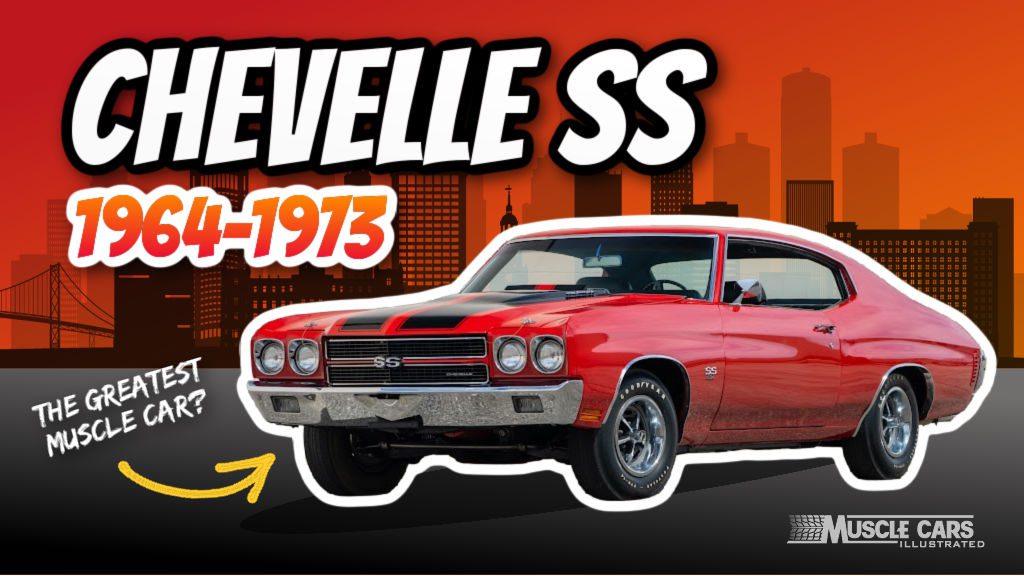
The Chevy Chevelle SS burst onto the automotive scene, helping to revolutionize the muscle car era with its perfect blend of mid-size agility and full-size V8 power.
The Chevelle SS was a product of Chevrolet’s ambition to compete in the burgeoning muscle car market, dominated by rivals like Ford, Dodge, and Pontiac—debuting the same year as the Pontiac GTO.
In the early 1960s, Chevrolet was focusing on vehicles that offered a balance of functionality and performance, but the launch of the Chevelle SS marked a shift towards a more performance-oriented approach.
Throughout its production years from 1964 to 1973, the Chevelle SS continually adapted to changing consumer tastes and regulatory environments. Each model year brought new enhancements, from engine upgrades to styling revisions, ensuring the SS remained relevant throughout its production run.
Let’s take a journey through the evolution of the Chevy Chevelle SS, shall we?
Table of Contents
Evolution of the Chevelle SS
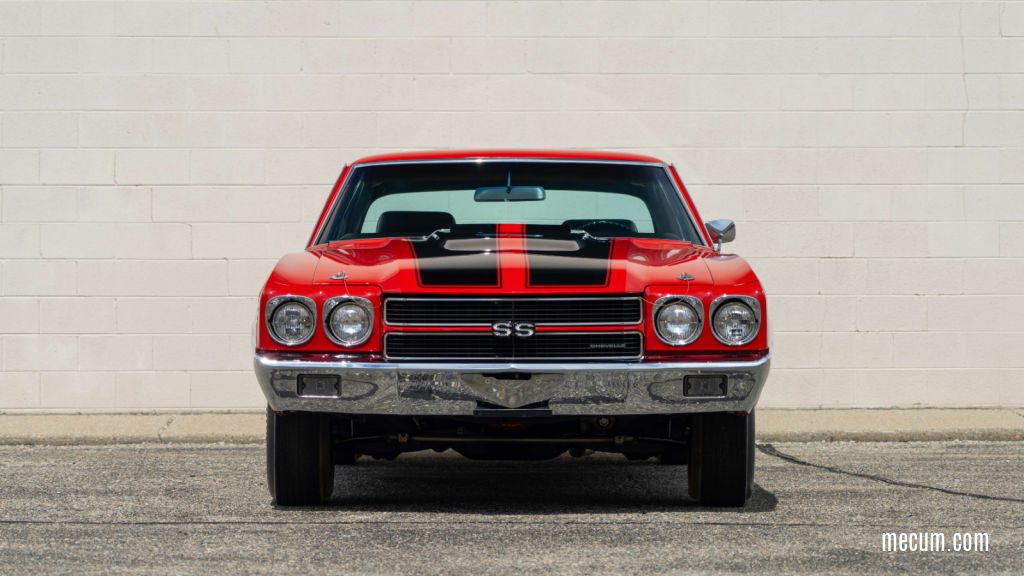
From 1964 to 1973, the Chevelle SS carved out a distinct legacy in the muscle car world, evolving through a decade of automotive innovation and cultural shifts. In this review, we’ll delve into each model year of the Chevelle SS, tracing its journey from its inception to its final year and examining the key developments that cemented its status as a legendary American muscle car.
1964 Malibu SS
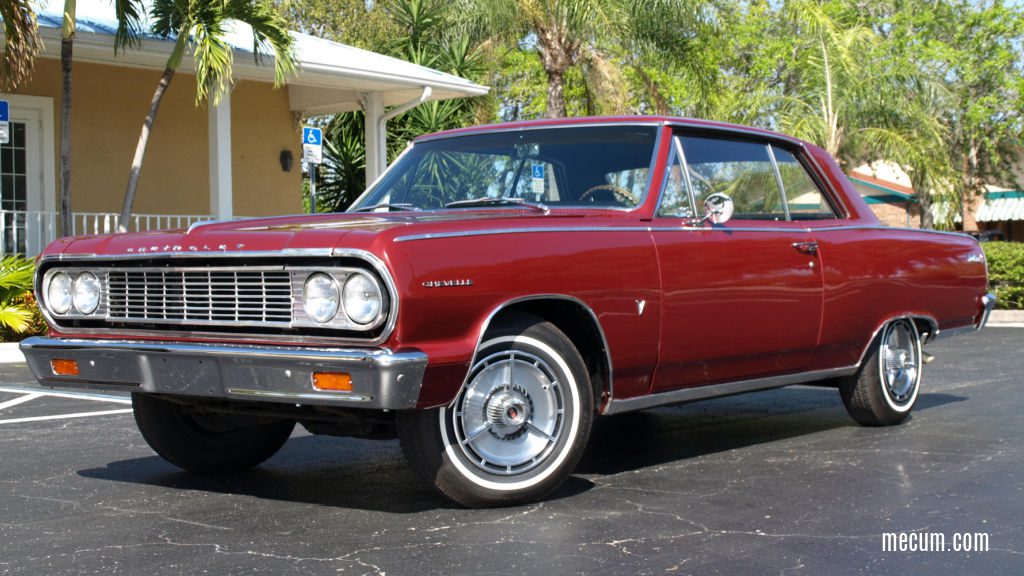
The 1964 Chevelle Malibu SS emerged as a fresh and stylish offering from Chevrolet, specifically targeting the younger generation with its new design and size.
This model year debuted with two standard engines: a 194 cubic inch six-cylinder and a more powerful 283 cubic inch V8, delivering 195 horsepower. For those seeking more cubic inches, optional engines included a 230 cubic inch six-cylinder with 155 horsepower and a 327 cubic inch V8, delivering 250 horsepower.
The 283 cubic inch engine with 220 horsepower, demonstrated commendable performance, achieving a quarter-mile time of 16.6 seconds (Car & Driver’s November 1963). Designed to rival the Ford Fairlane, the Chevelle successfully positioned itself in the market, producing 328,400 units in 1964, making it Chevrolet’s second-best-selling vehicle of the year.
The Malibu Super Sport versions, which featured the V8 option along with special SS wheel covers and trim, accounted for 76,860 units of the total sales in 1964. Despite the introduction of the 327 cubic inch V8, Chevrolet still trailed behind Pontiac in the mid-sized car market. Nonetheless, the Chevelle’s attractive pricing, even for the SS models, ensured its popularity among a wide range of consumers.
- Body Length: 193.9 in
- Wheelbase: 115 in
- Weight: 3,256 lb
Engine Options
| Engine | Horsepower | Tourqe |
|---|---|---|
| 194 cid I6 (1bbl) | 120 hp | 177 lb-ft |
| 230 cid I6 (1bbl) | 155 hp | 215 lb-ft |
| 283 cid V8 (4bbl) | 220 hp | 295 lb-ft |
| 283 cid V8 (2bbl) | 195 hp | 285 lb-ft |
| 327 cid V8 (4bbl) | 300 hp | 360 lb-ft |
| 327 cid V8 (4bbl) | 250 hp | 350 lb-ft |
Production Figures
| Body Style | Production |
|---|---|
| Coupe (V8) | 57,445 |
| Convertible (V8) | 9,640 |
| Coupe (I6) | 8,224 |
| Convertible (I6) | 1,551 |
| Total | 76,860 |
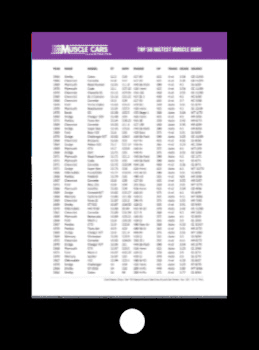
Get The Top 50 Fastest Muscle Cars chart. Includes year, model, engine, 1/4 mile times, and more—absolutely free!
1965 Chevelle SS
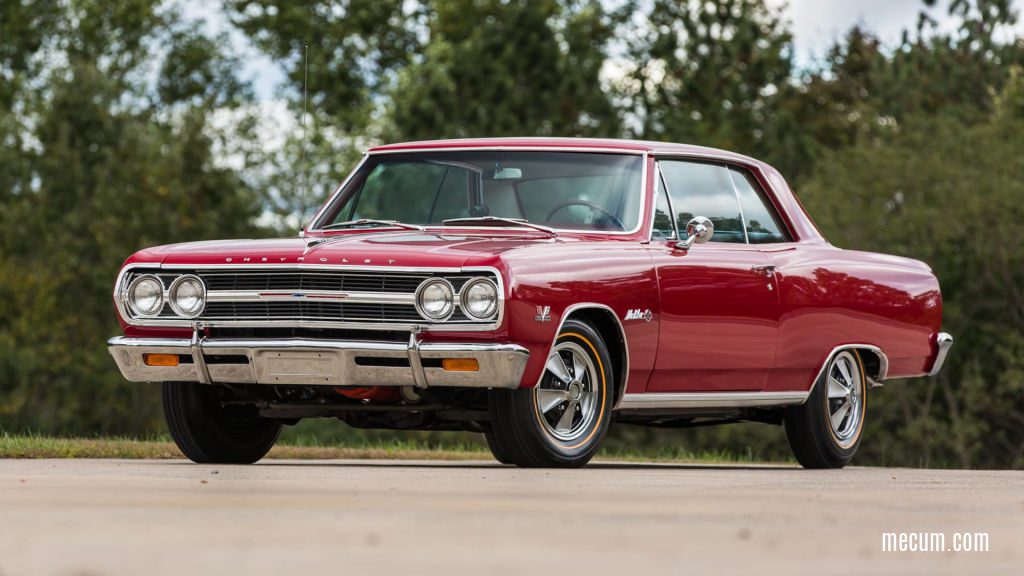
The 1965 Chevelle SS marked a significant evolution, primarily in its performance capabilities. While retaining the popular 115-inch wheelbase, it featured a freshly styled hood, grille, bumper, and front fenders. This SS was pivotal in transitioning the Chevelle from a standard offering to a more performance-oriented muscle car.
This model year was notable for its engine options, particularly the introduction of the 396 cubic inch V8. This engine, part of the Z-16 package, was a major step up, producing a robust 375 horsepower. It represented Chevrolet’s response to the growing muscle car trend and was a key feature that set the SS apart from its competitors.
This model year was available primarily in a sport-coupe body style. The introduction of the Z-16 package, which included the 396 cubic inch V8, was a substantial addition to the SS lineup. However, this package was extremely rare, with only 201 units manufactured (200 hardtops/1 convertible).
- Body Length: 196.6 in
- Wheelbase: 115 in
- Weight: 3,115 lb
Engine Options
| Engine | Horsepower | Tourqe |
|---|---|---|
| 194 cid I6 (1bbl) | 120 hp | 177 lb-ft |
| 230 cid I6 (1bbl) | 140 hp | 220 lb-ft |
| 283 cid V8 (4bbl) | 220 hp | 295 lb-ft |
| 283 cid V8 (2bbl) | 195 hp | 285 lb-ft |
| 327 cid V8 (4bbl) | 350 hp | 360 lb-ft |
| 327 cid V8 (4bbl) | 300 hp | 360 lb-ft |
| 327 cid V8 (4bbl) | 250 hp | 355 lb-ft |
| 396 cid V8 (4bbl) | 375 hp | 375 lb-ft |
Production Figures
| Body Style | Production |
|---|---|
| Coupe (V8) | 64,532 |
| Convertible (V8) | 7,995 |
| Coupe (I6) | 7,452 |
| Convertible (I6) | 1,133 |
| Total | 81,112 |
1966 Chevelle SS
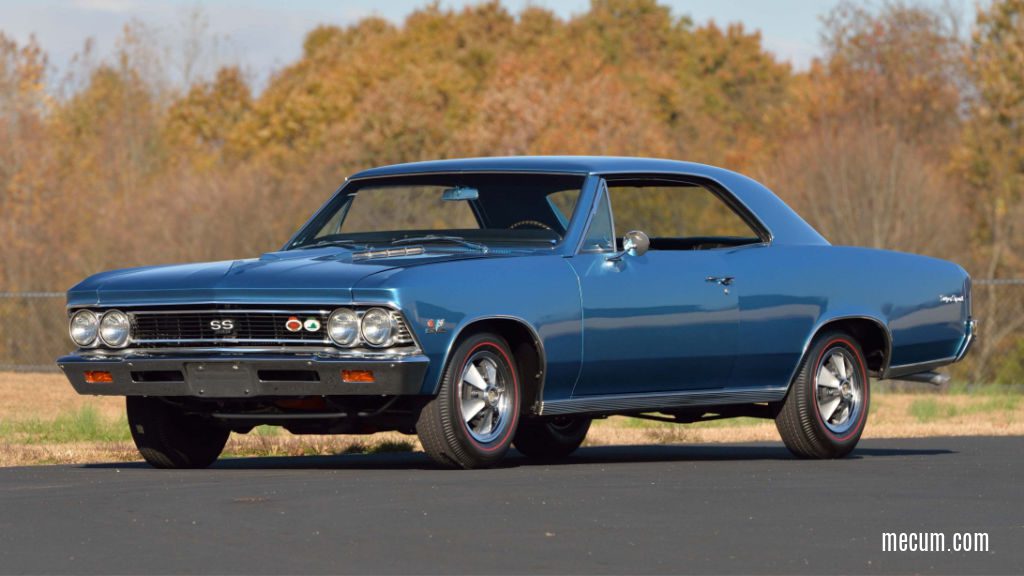
The 1966 Chevelle SS, known for its mid-size and value, marked a significant evolution in Chevrolet’s muscle car lineup, especially with the introduction of the SS 396 series of engines.
This year’s Chevelle SS underwent a redesign, featuring sleeker lines and a slightly longer length at 197 inches. This model year was particularly notable for the introduction of the SS 396 series, which was aimed at sports car enthusiasts and came with exclusive styling and powerful engine options.
The SS 396 series offered three versions of the standard 396 cubic inch V8 engine. The base engine produced 325 horsepower, while an optional upgrade L34 could produce 360 horsepower. Another option, the L78 396, boasted 375 horsepower. These engines propelled the Chevelle SS 396 to a quarter-mile time of 14.7 seconds at 99.9 mph, according to Car and Driver.
The Chevelle SS 396 was available in a sporty and luxurious package featuring dual exhaust, sport wheel covers, a tachometer, and signature simulated scoops. The base price of the SS was $2,776, making it a tempting option for those seeking performance on a budget. Production numbers for the L78 models were limited, with only about 3,100 units built.
- Body Length: 197 in
- Wheelbase: 115 in
- Weight: 3,375 lb
Engine Options
| Engine | Horsepower | Torque |
| 396 cid V8 (4bbl) | 325 hp | 410 lb-ft |
| 396 cid V8 (4bbl) | 360 hp | 420 lb-ft |
| 396 cid V8 (4bbl) | 375 hp | 415 lb-ft |
Production Figures
| Body Style | Production |
|---|---|
| Coupe | 66,843 |
| Convertible | 5,429 |
| Total | 72,272 |
1967 Chevelle SS
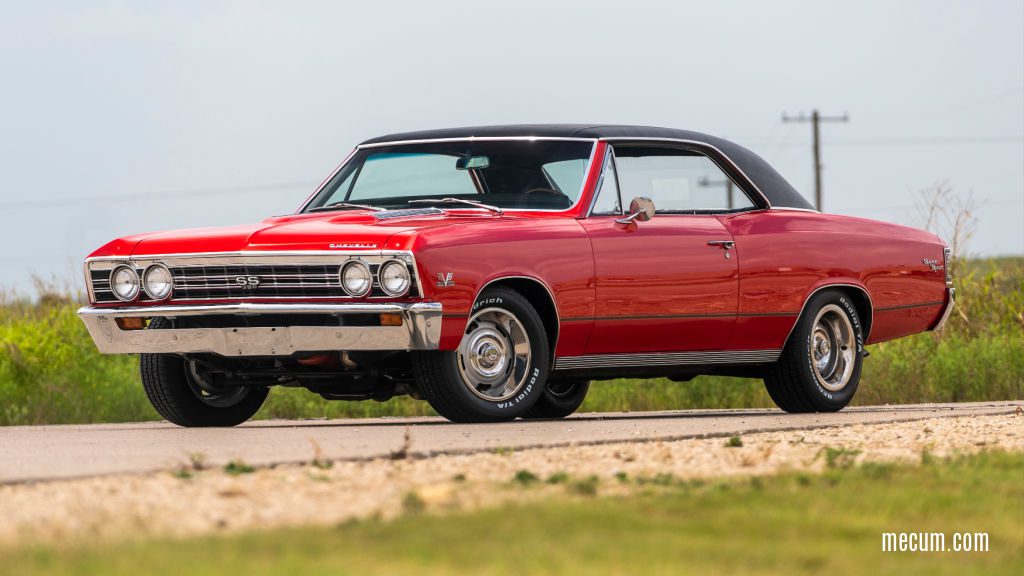
The 1967 Chevelle SS 396 represents another notable year in the evolution of this iconic American muscle car, with changes in design and performance.
The 1967 model year maintained an exterior body style similar to the previous year’s model but was distinguished by extended front fenders and a revised grille. These changes gave the car a more aggressive and distinct appearance, setting it apart from its predecessor.
Three engine options remained, with horsepower ratings of 325, 350 (a reduction of 10 horsepower from the previous year’s middle option), and 375. The SS 396 maintained its reputation for strong performance, achieving a quarter-mile time of 14.9 seconds at 96.5 mph, as reported by Motor Trend.
A notable addition was the introduction of a convertible SS 396, the heaviest Chevelle model, weighing in at 3,485 pounds. This model was also the only Chevelle with a base price over $3,000. The total production numbers for the 1967 Chevelle SS models were 63,006 units.
- Body Length: 197 in
- Wheelbase: 115 in
- Weight: 3,415 lb
Engine Options
| Engine | Horsepower | Torque |
| 396 cid V8 (4bbl) | 325 hp | 410 lb-ft |
| 396 cid V8 (4bbl) | 350 hp | 415 lb-ft |
| 396 cid V8 (4bbl) | 375 hp | 415 lb-ft |
Production Figures
| Body Style | Production |
|---|---|
| Coupe | 59,685 |
| Convertible | 3,321 |
| Total | 63,006 |
1968 Chevelle SS
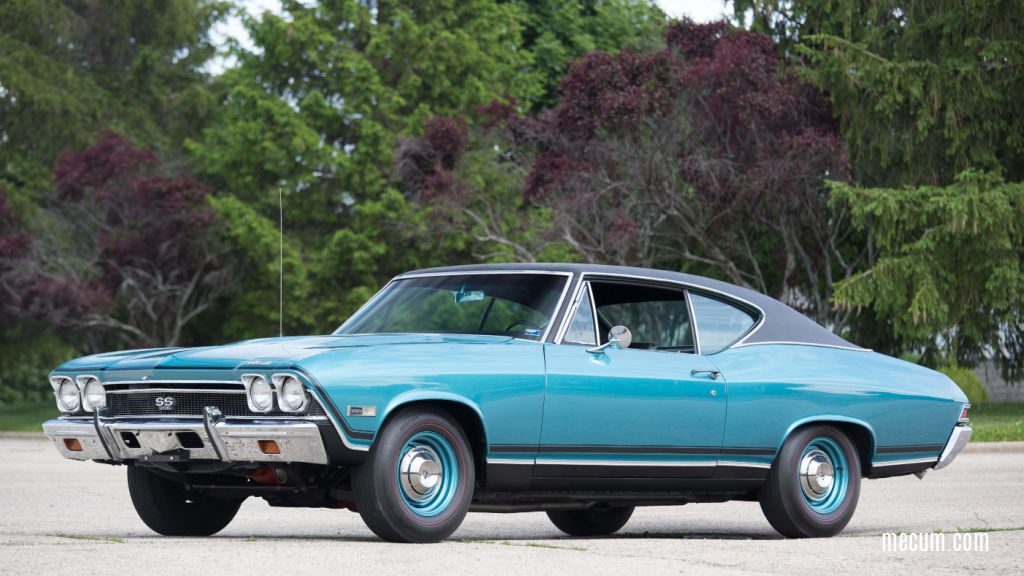
The 1968 Chevelle SS underwent significant changes, marking its next evolution with a new body style and enhanced performance capabilities.
The 1968 model year featured a distinctly changed body style, transitioning to what is known as its second generation. It showcased semi-fastback rooflines on 2-door models and a more pronounced curve at the rear window for sedans, setting it apart from previous models.
The SS 396 series retained three horsepower options, including 325, 350, and 375 respectively. The 1968 Chevelle SS 396 earned a quarter-mile time of 14.8 seconds at 99.0 mph, as reported by Car Life.
The SS 396 Sport Coupe began a three-year design cycle in 1968, becoming one of history’s most successful muscle cars. The base price of the SS 396 was $2,825, with the high-powered L78 engine option available for an additional $237. The total production in 1968 dropped to 57,595 units.
- Body Length: 197.1 in
- Wheelbase: 112 in
- Weight: 3,510 lb
Engine Options
| Engine | Horsepower | Torque |
| 396 cid V8 (4bbl) | 325 hp | 410 lb-ft |
| 396 cid V8 (4bbl) | 350 hp | 415 lb-ft |
| 396 cid V8 (4bbl) | 375 hp | 415 lb-ft |
Production Figures
| Body Style | Production |
|---|---|
| Sport Coupe | 55,309 |
| Convertible | 2,286 |
| Total | 57,595 |
1969 Chevelle SS
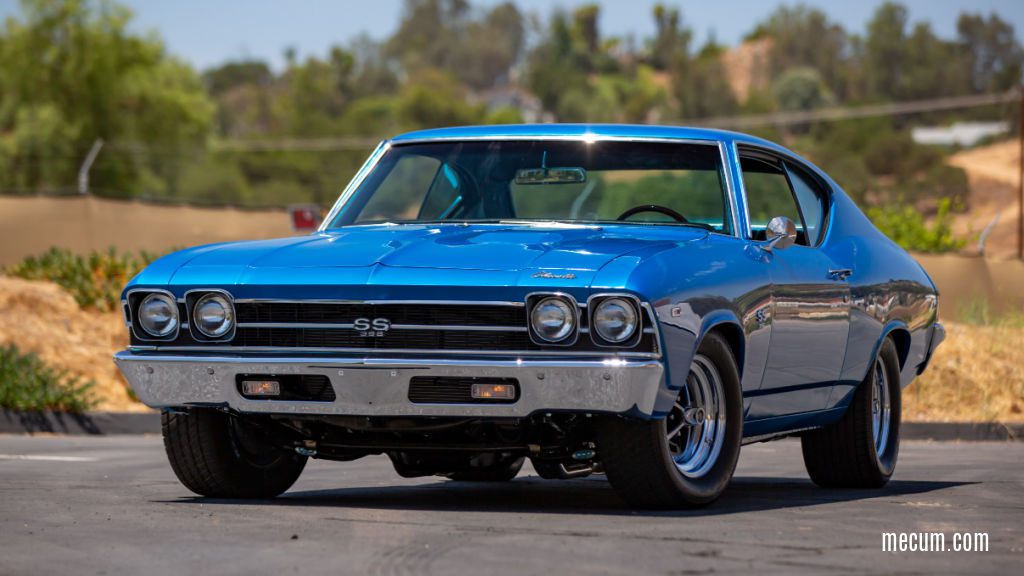
The 1969 Chevelle SS distinguished itself with significant changes, particularly in its availability and configuration options, setting it apart from its predecessors.
The 1969 Chevelle SS underwent a notable transformation, shifting from a standalone series to an optional SS 396 package that could be added to any Chevelle Coupe or Malibu Convertible. This change diversified the SS lineup and made the SS more accessible to a broader range of buyers.
This model year offered the now standard range of 396 V8 engines, starting with the base 325 horsepower, mid-level 350 horsepower, and finally, the performance-oriented 375 horsepower.
According to Car Craft, the SS 396 demonstrated impressive quarter-mile times, clocking in at 14.1 seconds at 101.9 mph.
Available in Sport coupe, 300 Sedan, convertible, and El Camino models, the 1969 Chevelle SS saw an increase in production run over the prior year to 86,307 units. High production numbers indicate the broad appeal of the Chevelle SS during this era.
- Body Length: 196.9 in
- Wheelbase: 112 in
- Weight: 3,230 lb
Engine Options
| Engine | Horsepower | Torque |
| 396 cid V8 (4bbl) | 325 hp | 410 lb-ft |
| 396 cid V8 (4bbl) | 350 hp | 415 lb-ft |
| 396 cid V8 (4bbl) | 375 hp | 415 lb-ft |
Production Figures
| Body Style | Production |
|---|---|
| Sport Coupe, Convertible, 300 Sedan, and El Camino | 86,307 |
| Total | 86,307 |
1970 Chevelle SS
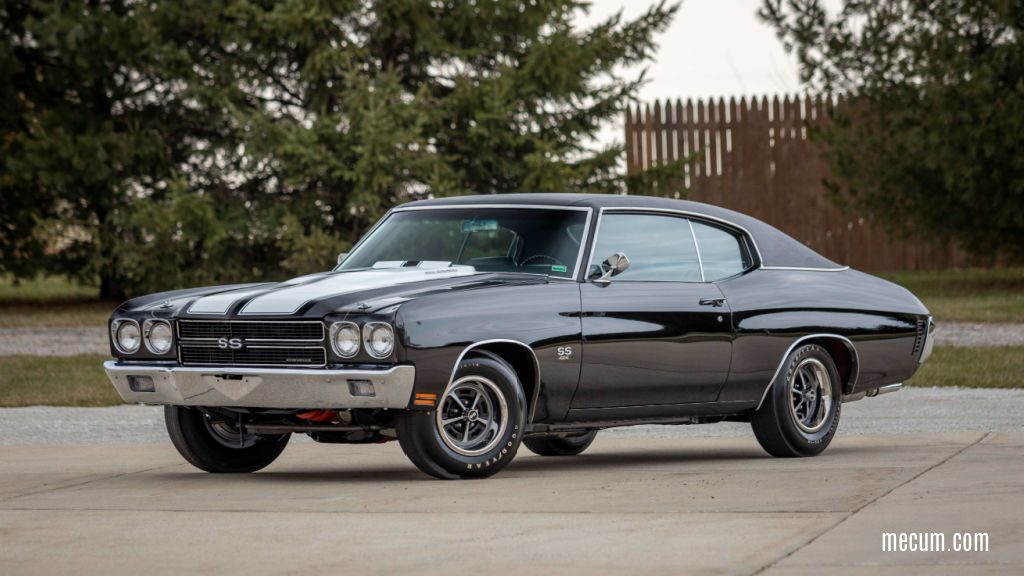
The 1970 Chevelle SS marked a significant milestone in the muscle car era, featuring another redesign and a more curvaceous body style that set it apart from its precursors.
This model year also stands out for introducing the most powerful engine of the time, the LS6 454 cubic inch engine with 450 horsepower. This was a direct result of Chevrolet lifting its self-imposed restriction on engines larger than 400 cubic inches in its intermediate cars.
Two new engines were introduced during this model year that capitalized on the lift of the engine size restrictions, including a 402 and 454 cubic inch engine.
The 402 cubic inch engine was essentially a modified version of the previous 396 cubic inch engine. The increase in displacement from 396 to 402 cubic inches was due to a slight increase in the engine’s bore. The 402 engine was offered in the usual three horsepower variants, 325, 350, and 375, providing a range of performance options from cruiser to street terror.
The Chevy 454 engine was available in two horsepower configurations. The LS5 version produced 360 horsepower, while the more powerful LS6 variant delivered a staggering 450 horsepower. The prowess of the LS6 engine was showcased in Car Craft magazine’s November 1969 issue, where it attained a quarter-mile time of 13.12 seconds, traveling at 107.1 mph.
The SS package was exclusive to the Malibu sports coupe, convertible, and El Camino pickup. It was a formidable competitor in the muscle car market, holding its own against rivals such as the Pontiac GTO, Oldsmobile 442, Buick GSX, Dodge Charger R/T, Plymouth Roadrunner, and Ford Torino Cobra.
Despite the lack of detailed production numbers for each body style of the 1970 Chevelle SS, the total production volume was 62,372 units—a significant decline over the previous year’s production numbers.
- Body Length: 197.2 in
- Wheelbase: 112 in
- Weight: 3,307 lb
Engine Options
| Engine | Horsepower | Torque |
| 402 cid V8 (4bbl) | 325 hp | 410 lb-ft |
| 402 cid V8 (4bbl) | 350 hp | 415 lb-ft |
| 402 cid V8 (4bbl) | 375 hp | 415 lb-ft |
| 454 cid V8 (4bbl) | 360 hp | 500 lb-ft |
| 454 cid V8 (4bbl) | 450 hp | 500 lb-ft |
Production Figures
| Engine (Malibu coupe/Convertible and El Camino) | Production |
|---|---|
| SS396 | 53,599 |
| SS454 | 8,773 |
| Total | 62,372 |
1971 Chevelle SS
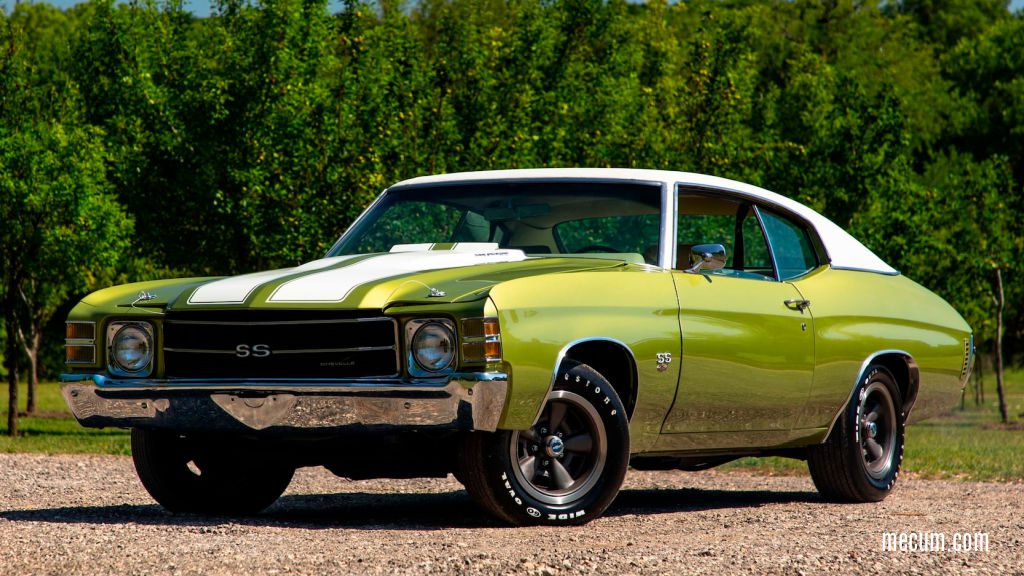
The 1971 Chevelle SS stands as a notable model in the history of American muscle cars, reflecting a period of transition and adaptation to new regulations.
The 1971 model introduced a Monte Carlo-inspired single headlight design, replacing the dual side-by-side headlights, and updated the rear with dual circular taillights and a centrally mounted SS emblem on the bumper, replacing the previous rubber pad stamp.
In 1971, only three engines were available, each with a single horsepower rating: a new 350 cubic inch engine with 270 horsepower and simplified 402 and 454 engines offering 300 and 365 horsepower, respectively.
1971 also marked the discontinuation of the LS6 engine from the SS line, a change driven by General Motors’ new requirements for unleaded gas compatibility and other safety, gas mileage, and emissions concerns.
The SS package was available on the Chevelle, Malibu, and El Camino platforms. The 1971 model year was characterized by minimal changes in body styles and overall design, focusing more on compliance with new federal emission regulations.
- Body Length: 197.52 in
- Wheelbase: 112 in
- Weight: 3,296 lb
Engine Options
| Engine | Horsepower | Torque |
| 350 cid V8 (4bbl) | 270 hp | 300 lb-ft |
| 402 cid V8 (4bbl) | 300 hp | 260 lb-ft |
| 454 cid V8 (4bbl) | 365 hp | 465 lb-ft |
Production Figures
| Engine | Production |
|---|---|
| SS (All Engines & Malibu Hardtop/Convertible and El Camino) | 19,293 |
| Total | 19,293 |
1972 Chevelle SS
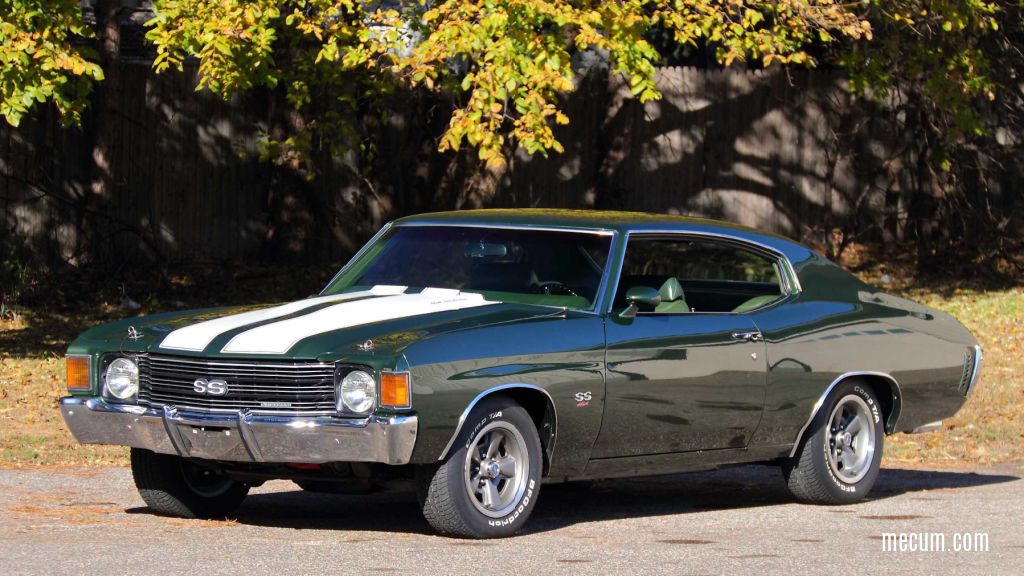
The 1972 Chevelle SS continued with the 1971 body style, featuring minimal styling differences, primarily the grille and single-unit front turn signal lenses.
The top engine option for the SS was a 454 cubic inch engine rated at 270 net horsepower under GM’s new net rating system. This marked a shift from the previous gross ratings, reflecting a more realistic measure of power. All other engines available for the SS remained unchanged from 1971.
The 1972 model was the last year for the cowl induction hood option. Interestingly, this feature wasn’t even mentioned in the 1972 Chevelle brochure, signaling this iconic performance feature’s end.
While specific production numbers for the SS model are not detailed, the overall popularity of the Chevelle series, including the SS, contributed to its status as America’s second-best-selling car in 1972.
- Body Length: 197.5 in
- Wheelbase: 112 in
- Weight: 3,300 lb
Engine Options
| Engine | Horsepower (Net) | Torque |
| 350 cid V8 (4bbl) | 175 hp | 280 lb-ft |
| 402 cid V8 (4bbl) | 240 hp | 345 lb-ft |
| 454 cid V8 (4bbl) | 270 hp | 390 lb-ft |
Production Figures
| Engine | Production |
|---|---|
| SS (All Engines & Malibu Hardtop/Convertible and El Camino) | 24,946 |
| Total | 24,946 |
1973 Chevelle SS
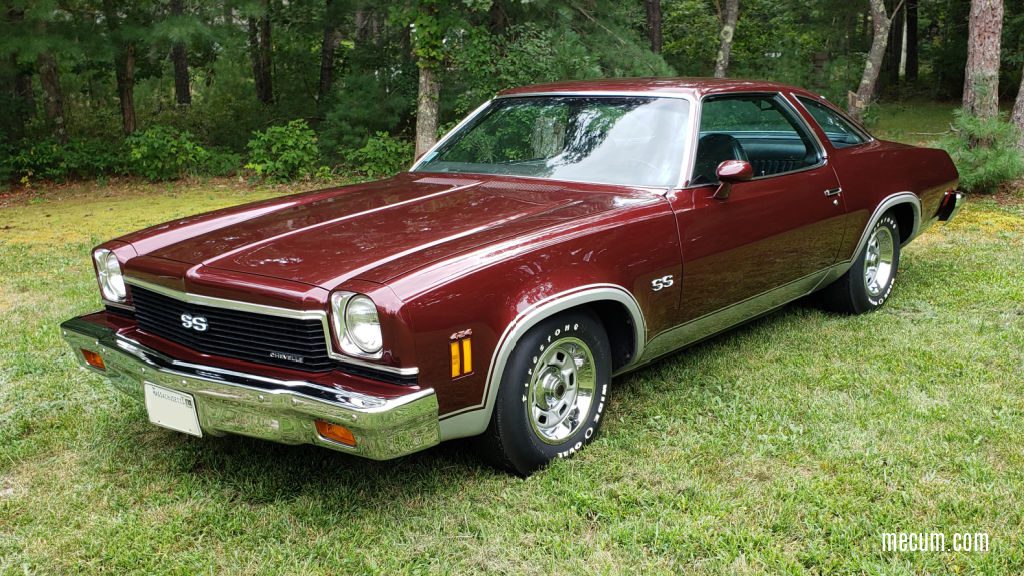
The 1973 Chevelle SS represented a major shift in the American muscle car scene, particularly for Chevrolet’s flagship model. This year saw the most significant body style overhaul since the Chevelle’s 1964 debut, transitioning from the classic sports coupe to the Colonnade Coupe.
Under the hood, the 1973 Chevelle SS offered mildly powerful V8 engine options. The base engine was a 350 cubic inch V8, producing 175 net horsepower. The 454 cubic inch V8 was available for those seeking more power, rated at 245 net horsepower.
The SS package was available in various models, including some station wagons, marking its versatility and appeal. This year was the final curtain call for the Chevelle SS, symbolizing the end of an era for Chevrolet’s muscle car dominance.
- Body Length: 209.7 in
- Wheelbase: 112 in
- Weight: 3,470 lb
Engine Options
| Engine | Horsepower (Net) | Torque |
| 350 cid V8 (4bbl) | 175 hp | 270 lb-ft |
| 454 cid V8 (4bbl) | 245 hp | 375 lb-ft |
Production Figures
| Engine | Production |
|---|---|
| SS (All Engines & Colonnade Coupe, El Camino, and Station Wagons) | 28,647 |
| Total | 28,647 |
Conclusion
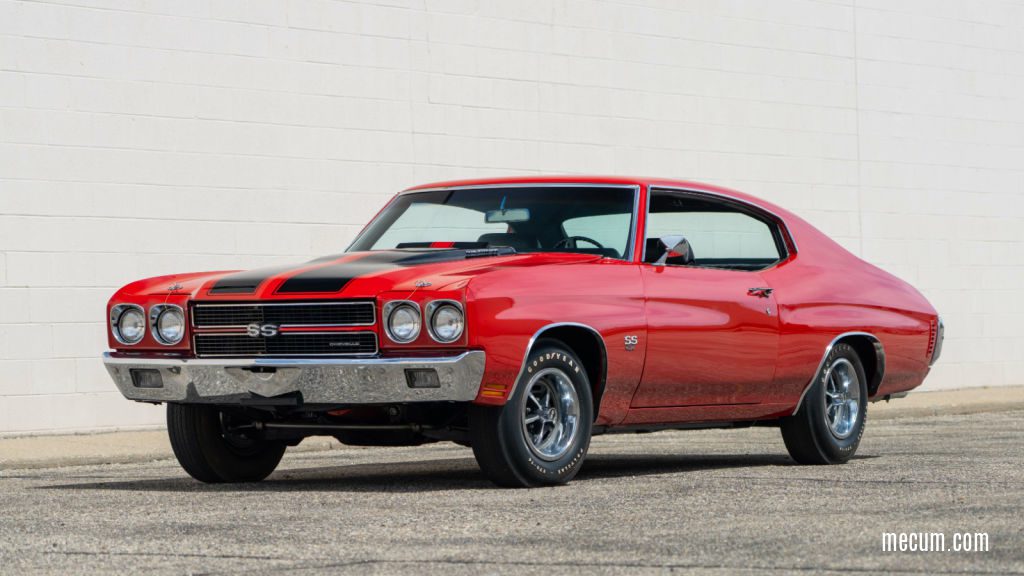
The Chevrolet Chevelle SS, spanning from 1964 to 1973, stands as a monumental figure in the muscle car era. Throughout its decade-long journey, it underwent numerous transformations, including style revamps, engine enhancements, and feature additions. Recognized for its high horsepower engines, striking design, and dynamic performance, the Chevelle SS remains a celebrated icon of American automotive history.
Related Questions
In a Chevelle, “SS” stands for “Super Sport,” a designation used by Chevrolet to denote high-performance versions of their vehicles.
In 1970, the base price of a Chevelle SS 396 was approximately $3,800, but this could vary with optional features and packages.
The 1970 Chevelle SS 454 LS6 is considered the fastest Chevelle ever produced, recording a 13.12-second quarter-mile pass traveling at 107.1 miles per hour (11/69 CarCraft).
The 1970 SS 454 LS6 holds the title for the most horsepower during the muscle car era. Its engine was rated at 450 horsepower.
No, Chevrolet has not announced any plans to bring back the Chevelle. Nearly five decades after it departed, it does not look like it will make a comeback.
Take Our Poll
"*" indicates required fields
Sources: Chevelle Stuff, Chevelle Data and ID Guide, Wikipedia

Ryan Wheaton
Ryan has owned muscle cars since 1986 and currently owns a 1972 Dodge Charger Rallye. He combines passion and experience to create engaging content for fellow muscle car enthusiasts. In 2018, he founded Muscle Cars Illustrated, authoring hundreds of articles on tips, history, and trends in the muscle car industry. He attends national car shows, auctions, and museums to stay current with the latest developments in the muscle car industry.
